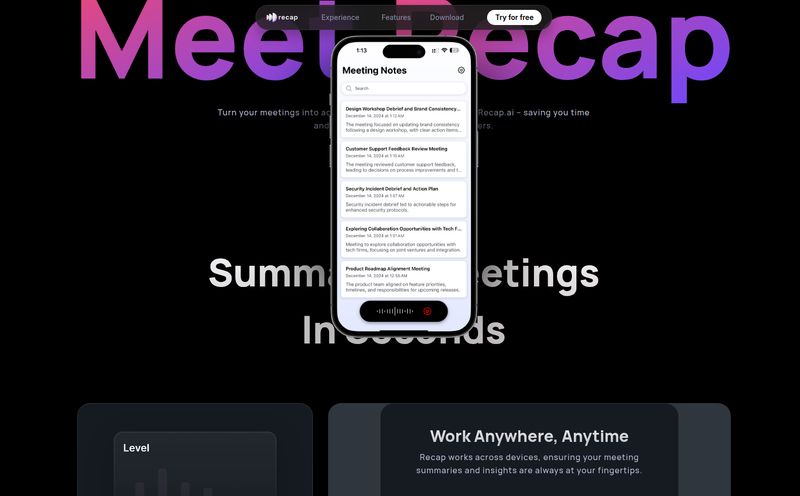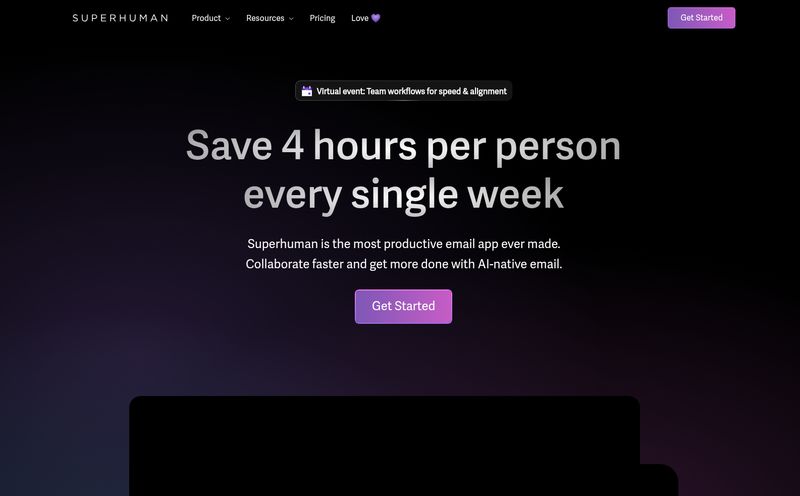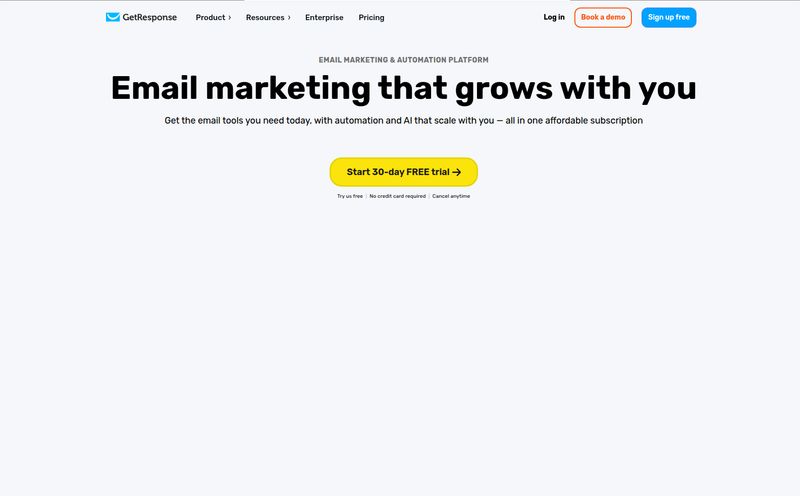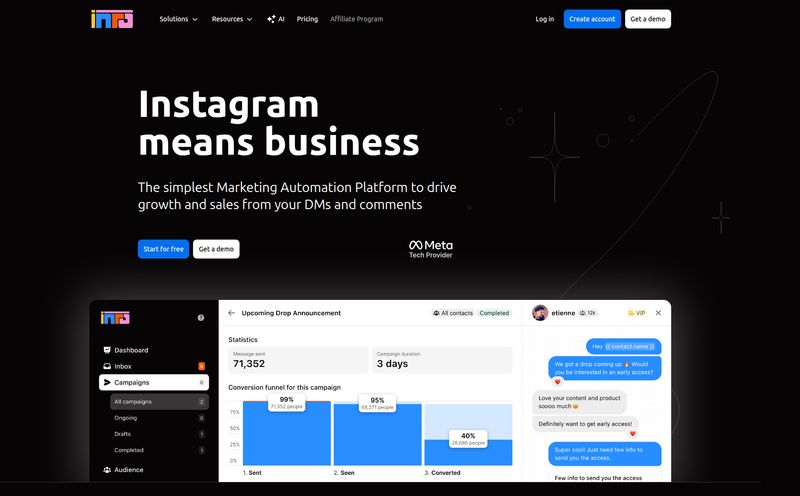Cold outreach is a grind. A soul-sucking, spreadsheet-fueled, low-conversion-rate grind. We’ve all been there, sending another “hope this finds you well” into the digital void, praying for a reply that isn’t a snarky unsubscribe. For years, we’ve cobbled together solutions. A messy CRM here, a LinkedIn Sales Navigator subscription there, and a frantic Slack channel called #who-knows-someone-at-acme-corp. It’s chaos.
So when I first heard about The Swarm and its pitch as a “go-to-network” platform, my inner skeptic, honed by years of shiny new SaaS tools that promise the world, raised an eyebrow. Another tool? Another subscription? But then I looked closer, and the idea started to click. It’s not about finding new people. It’s about uncovering the people you and your team already know. Subtly different, but a massive shift in approach.
This isn't just another contact database. It's more like a relationship GPS for your entire organization. And frankly, I'm intrigued.
So, What Exactly is This "Go-to-Network" Thing Anyway?
Okay, “Go-to-Network” or GTN is a term that’s been buzzing around a bit, especially in VC and startup circles. Forget Go-to-Market for a second. The idea behind a GTN platform like The Swarm is to build a system around your company’s collective social graph. Your network, my network, our investors’ networks, our advisors’ networks—all pooled into one searchable, intelligent database.
Think about it. The warmest introduction you can possibly get is from a trusted colleague or friend. The problem is, you have no earthly idea that your head of engineering used to work with the VP of Marketing at your dream client. It's hidden information. Locked away in people's heads and private LinkedIn connections.
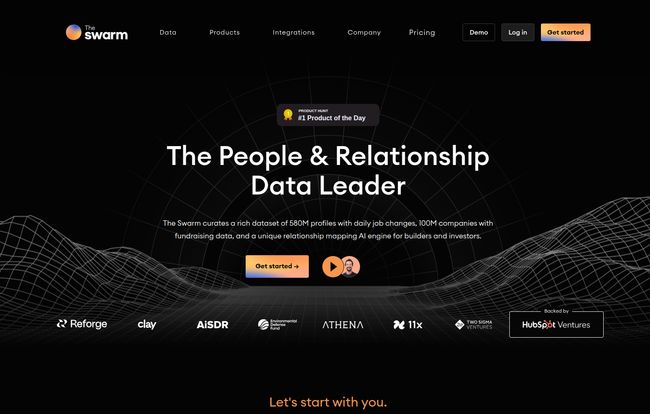
Visit The Swarm
The Swarm aims to surface that hidden information. It connects to your team’s email, and LinkedIn contacts, and CRMs, and then does some AI magic to map out who knows who, and how well. It's like turning on the lights in a dark room filled with filing cabinets; suddenly you can see all the connections that were there the whole time.
The Core Features That Actually Matter
I’m not going to just list features like a product sheet. Let’s talk about what actually moves the needle. After poking around, a few things really stand out.
The Almighty Chrome Extension
This is where the rubber meets the road for me. When you’re on a LinkedIn profile, The Swarm’s extension pops up and tells you if anyone in your pooled network has a path to this person. It’s instant. No more cross-referencing spreadsheets or bugging people on Slack. It even helps you find business emails, which is a nice little bonus that saves you a click and another tool's subscription.
Relationship Scoring and Insights
This part could easily be marketing fluff, but it seems to have some teeth. The platform doesn't just say “Jane knows John.” It tries to score the strength of that relationship. Did they just connect once or did they work together for five years at Google? It looks for work history overlaps, education, and other signals to tell you if an intro path is a solid bridge or a flimsy rope. It’s not perfect, but its a hell of a lot better than guessing.
The Integrations: Connecting the Dots
A tool is only as good as how well it plays with others. The Swarm knows this. The integration with Clay.com is huge for anyone serious about modern outbound and enrichment workflows. And of course, it connects to your standard CRMs. This is important because it means the relationship data doesn’t live in a silo. It can be piped right into the systems your sales and recruiting teams already live in. This is the difference between a helpful gadget and a core piece of infrastructure.
Let's Talk About the Price Tag
Alright, the all-important question: what’s this going to cost me? The Swarm uses a tiered model, which is pretty standard. But how it's broken down is what's interesting. It's based on the number of connections you pool, which makes sense since that’s the core resource.
Here’s a quick breakdown as I see it:
| Plan | Price | Connections | Who It's For |
|---|---|---|---|
| Free | $0 | Up to 100 | The solo founder, the curious freelancer, or a very small team just wanting to test the waters. It’s limited, but it lets you see the magic. |
| Base | $99 / month | Up to 500 | This feels like the sweet spot for most startups and small businesses. You get unlimited intro paths and the key integrations like Clay and your CRM. This is the real starting point. |
| Premium | $299 / month | Up to 1,000 | For the power users. Sales teams, VCs, and recruiting agencies who need API access to build custom workflows and want more data enrichment. |
| Enterprise | Contact Us | Custom | The big dogs. Full database access, dedicated support, all the bells and whistles for large organizations. The usual “if you have to ask…” tier. |
The pricing isn't trivial, especially once you hit the Base tier. This isn't a casual-use tool. You have to be committed to the Go-to-Network strategy for the ROI to make sense. But if a single warm intro from this tool lands you a five or six-figure deal... well, it pays for itself pretty quicky, doesn't it?
The Not-So-Shiny Parts (The Cons)
No tool is perfect, and it’d be disingenuous to pretend The Swarm is. There are a few hurdles to keep in mind.
First and foremost, the platform is only as powerful as the network you feed it. Its biggest strength is also its biggest potential weakness. You have to get your team, your investors, and your key stakeholders to actually connect their accounts. This can be a huge cultural and logistical challenge. Some people are protective of their contacts, and getting buy-in is step zero. Without it, you've just got an empty, expensive box.
Then there are the inevitable privacy questions. Letting a platform scan your contacts feels a bit... icky at first. The Swarm is quick to point out its GDPR and CCPA compliance, and that you have control over your data. But it's a conversation you need to have with your team. Transparency is key here.
My Final Verdict: Is The Swarm a Game Changer?
I’ve seen a lot of tools come and go. Most are just incremental improvements on old ideas. The Swarm feels different. It’s tackling a fundamental, human problem—the opacity of professional networks—with a smart, tech-driven solution.
So, who is this for?I think it’s a killer tool for B2B startups, sales teams, venture capital firms, and high-growth companies. Basically, anyone whose success depends on getting into the right rooms and talking to the right people. For recruiters, it could be an absolute goldmine for finding candidates through trusted referrals.
Who is it probably not for?If you’re a B2C company, or a solopreneur with a relatively small, static network, this is probably overkill. You can likely manage your world with a good ol' fashioned spreadsheet and some hustle.
At the end of the day, The Swarm isn't a magic wand. It won't close deals for you. But it might just be the best map you can find to discover where the treasure is buried. It turns networking from a game of chance into a game of strategy. And for me, that's a pretty compelling proposition.
Frequently Asked Questions about The Swarm
What is a Go-to-Network (GTN) platform, really?
Think of it as a system that pools the professional networks of everyone in your company (and your investors, advisors, etc.) into one central, searchable place. Instead of asking "who knows someone at X?" in Slack, you can just search and see all the potential introduction paths instantly.
How does The Swarm get its relationship data?
It primarily works by having users connect their professional accounts, like Google, Outlook, and LinkedIn. It then analyzes this data—looking at email history, calendar events, and connections—to map relationships. The platform states it has 580 million profiles in its dataset that it uses for enrichment and keeping data fresh, like with job changes.
Is The Swarm only for sales teams?
Not at all. While sales is an obvious use case for finding warm intros to prospects, it's also incredibly powerful for recruiters looking for referred candidates, founders doing fundraising, and business development teams looking for strategic partners.
How does the pricing and credit system work?
The main pricing is a monthly subscription based on the number of connections you want to manage. The free plan is quite limited. The paid plans (Base, Premium) offer a lot more functionality. The images mention credits being needed for things like partner integrations or certain API fetches, suggesting a hybrid model for some advanced features.
Is my data and my team's data safe with The Swarm?
This is a big concern for any tool in this space. The Swarm states on its site that it is GDPR and CCPA compliant and gives users control over their privacy. However, like with any platform, it’s important for your organization to review their security and privacy policies before getting your whole team to sign up.
Wrapping It Up
The age-old saying, “It’s not what you know, it’s who you know,” is only half true. The real secret is knowing who you know. Most businesses are sitting on a treasure trove of relationship data and they don’t even realize it. The Swarm is one of the first tools I've seen that provides a practical, scalable way to mine that treasure. It's an ambitious idea, but from what I can see, the execution is pretty darn impressive.
